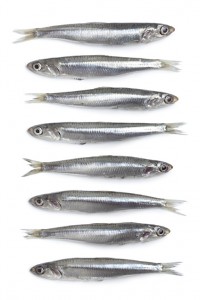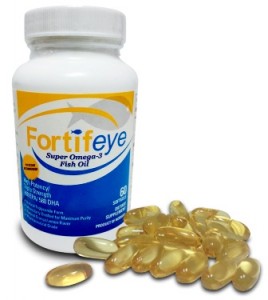Omega three is quite a buzz word lately.
 The world is going through an omega three explosion. You hear about the positive health benefits from increased consumption of omega three fatty acids on talk shows, advertisements, health food stores, drug stores, the Internet and from your friends and physicians. There are so many different means of obtaining omega three fatty acids that it becomes quite confusing. Currently the best and most bioavailable form of omega three fatty acids is derived from marine sources. Fish oil, krill oil and squid oil (calamari) have the highest most bioavailable forms of omega three fatty acids. Fish oil currently has by far the most clinical research linking the positive health benefits to omega three out of the three mentioned. The shelves at the supermarket, health food stores and drug stores are filled with different brands, concentrations and derivatives of omega three fish oil. The typical consumer can become very confused when attempting to purchase an omega three fish oil while relying on a store clerk with very little education to make a recommendation.
The world is going through an omega three explosion. You hear about the positive health benefits from increased consumption of omega three fatty acids on talk shows, advertisements, health food stores, drug stores, the Internet and from your friends and physicians. There are so many different means of obtaining omega three fatty acids that it becomes quite confusing. Currently the best and most bioavailable form of omega three fatty acids is derived from marine sources. Fish oil, krill oil and squid oil (calamari) have the highest most bioavailable forms of omega three fatty acids. Fish oil currently has by far the most clinical research linking the positive health benefits to omega three out of the three mentioned. The shelves at the supermarket, health food stores and drug stores are filled with different brands, concentrations and derivatives of omega three fish oil. The typical consumer can become very confused when attempting to purchase an omega three fish oil while relying on a store clerk with very little education to make a recommendation.
All omega three fish oils are not created equal!
It is essential to consume only the highest quality, purest omega three fish oil for optimal health. Recently Good Morning America made the public aware of the potential contaminants that are in certain fish oil products sold over the counter. Currently there is an ongoing lawsuit aimed at some fish oil companies and drug stores that are selling products that had potentially health threatening amounts of contaminants like PCBs in their oils. PCBs (polychlorinated biphenyls) are persistent organic pollutants banned in 1979 but still present in ocean waters. One should only purchase omega three fish oil that has been thru a molecular distillation refining process to reduce any potential contaminants.
The most reputable and experienced fish oil processing plants are in Norway
Make sure your fish oil is coming from a state of the art production facility based in Norway. The facility should be GMP certified and NSF certified as well. In addition to NSF and GMP certification, the plant should be drug licensed by the Norwegian health authorities. These are the highest standards for regulating fish oil factories. Look for something on the bottle that says “Product of Norway”.
What types of fish are being used for the fish oil?
The highest quality omeg a three fish oils are derived from wild caught, non threatened small plankton feeding anchovies, sardines and mackerel from the deep clear pacific waters off the coast of South America. Harvesting these types of fish promotes a truly eco-friendly and sustainable marine source. These are relatively small and young fish that have a higher percentage of omega three fatty acids and are characterized by especially low levels of environmental impurities. If the fish oil label states the oil is coming from fish that are caught off the coast of Norway, or in pristine Norwegian waters, or in the Atlantic Ocean, think twice about purchasing that product. That statement is very misleading since the Norwegian factories are processing and purifying the crude oil that is sent to them from the fish caught in the Southern Hemisphere. They are not catching the fish in the Norwegian waters. Norwegian salmon are not wild salmon, they are usually farm raised. Stay away from farm raised salmon since they potentially can be high in pro-inflammatory fats called omega six and can be deficient in omega threes. The reddish orange color of a wild salmon comes from natural astaxanthin while the orange color in farm raised salmon comes from synthetic astaxanthin. You should be careful when purchasing salmon oil unless you know it is coming from wild caught Alaskan salmon. Ask to see an independent analysis of the fish oils, especially if using salmon oil. A-linolenic acid (ALA), which are omega three fatty acids derived primarily from vegetable sources, should be at less than one percent (average .85) in wild Alaskan salmon, while farmed salmon contain an average of 2 to 2.5% as a result of the composition of feed they are eating, according to a paper published by J Molkentin in European Food Research and Technology (2007). This research revealed a method for distinguishing organically farmed salmon from wild Atlantic salmon. The omega three to omega six ratio is different in farm raised versus wild salmon as well. And new research showed that, compared with farmed salmon, wild salmon had a much more favorable omega-3/omega-6 ratio:
a three fish oils are derived from wild caught, non threatened small plankton feeding anchovies, sardines and mackerel from the deep clear pacific waters off the coast of South America. Harvesting these types of fish promotes a truly eco-friendly and sustainable marine source. These are relatively small and young fish that have a higher percentage of omega three fatty acids and are characterized by especially low levels of environmental impurities. If the fish oil label states the oil is coming from fish that are caught off the coast of Norway, or in pristine Norwegian waters, or in the Atlantic Ocean, think twice about purchasing that product. That statement is very misleading since the Norwegian factories are processing and purifying the crude oil that is sent to them from the fish caught in the Southern Hemisphere. They are not catching the fish in the Norwegian waters. Norwegian salmon are not wild salmon, they are usually farm raised. Stay away from farm raised salmon since they potentially can be high in pro-inflammatory fats called omega six and can be deficient in omega threes. The reddish orange color of a wild salmon comes from natural astaxanthin while the orange color in farm raised salmon comes from synthetic astaxanthin. You should be careful when purchasing salmon oil unless you know it is coming from wild caught Alaskan salmon. Ask to see an independent analysis of the fish oils, especially if using salmon oil. A-linolenic acid (ALA), which are omega three fatty acids derived primarily from vegetable sources, should be at less than one percent (average .85) in wild Alaskan salmon, while farmed salmon contain an average of 2 to 2.5% as a result of the composition of feed they are eating, according to a paper published by J Molkentin in European Food Research and Technology (2007). This research revealed a method for distinguishing organically farmed salmon from wild Atlantic salmon. The omega three to omega six ratio is different in farm raised versus wild salmon as well. And new research showed that, compared with farmed salmon, wild salmon had a much more favorable omega-3/omega-6 ratio:
- Farmed Atlantic salmon had an omega-3/omega-6 ratio of 6.5 to 1
(26% omega-3 fat / 4.4% omega-6 fat). - Wild Atlantic salmon had an omega-3/omega-6 ratio of 19 to 1
(26.7% omega-3 fat / 1.4% omega-6 fat).
Smell and taste is extremely important
 If something doesn’t smell or taste good, the consumer will not consume it. High quality fish oil will have a very pleasant smell and taste whether it is in liquid form or in a gel cap. The refining process has great impact on smell and taste. Pure unrefined products often times have a very unpleasant sensory characteristic. If you bite into a gel cap and the oil smells and tastes rancid, think twice about taking it since the quality may be questionable. Make sure only natural flavoring is used and no artificial sweeteners are used to improve taste. Read the label. The Norwegians have done extensive research in the development of a good tasting natural fish oil.
If something doesn’t smell or taste good, the consumer will not consume it. High quality fish oil will have a very pleasant smell and taste whether it is in liquid form or in a gel cap. The refining process has great impact on smell and taste. Pure unrefined products often times have a very unpleasant sensory characteristic. If you bite into a gel cap and the oil smells and tastes rancid, think twice about taking it since the quality may be questionable. Make sure only natural flavoring is used and no artificial sweeteners are used to improve taste. Read the label. The Norwegians have done extensive research in the development of a good tasting natural fish oil.
Using an eco-friendly sustainable food source is recommended when looking for a good fish oil
The definition is: “Sustainable development is development that meets the needs of the present without compromising the ability of future generations to meet their own needs.” The use of anchovies, sardines and mackerel for omega three fish oil is truly to use an eco-friendly and sustainable source.
Make sure the fish oil has gone thru molecular distillation to refine and eliminate any potential contaminants
A triple molecular distillation process will ensure the highest purity. Independent third party contaminant analysis of each batch should be routinely done. Most reputable fish oil companies can make an analysis available to the consumer with some advanced notice. If the fish oil is not molecularly distilled it may have hazardous levels of contaminants like PCBs. Oils that are not refined will very likely contain trace allergens. People with seafood allergies can react to unrefined oils.
Two types of readily available omega three fish oils are ethyl ester and triglyceride
The natural triglyceride form of fish oil should go thru molecular distillation to purify the oils. A typical natural triglyceride form of fish oil will have a concentration of about 180 EPA and 120 DHA. The synthetic ethyl ester version uses ethanol in the distillation and concentration process during transesterification to produce a higher concentration of EPA and DHA. During this process the natural triglyceride backbone is replaced with an ethyl ester backbone. This produces a fairly pure and highly concentrated omega three fish oil. This concentrated form of fish oil can obtain 450 EPA and 300 DHA in one capsule. In order to convert the ethyl ester back to the more natural triglyceride form, one more step of transesterification must be done to replace the ethyl ester based backbone with a triglyceride backbone the way it occurs naturally in ocean fish. Many fish oil companies will not go that extra step due to cost! It is almost 50% more expensive to go through this final step to convert the synthetic ethyl ester fish oil back to more natural triglyceride based fish oil. Almost all of the leading authorities on omega three fish oil will agree that the triglyceride form is more stable and bioavailable over the cheaper synthetic ethyl ester version. Most patients using this triglyceride form of fish oil will have fewer problems with burp back of the nasty fish taste common to some fish oils. Ethanol is a free radical and ethanol can potentially cause free radical damage in the body. The amount of ethanol in this form of fish oil is relatively low (.1%-.5%) but certain groups of populations should be avoiding ethanol completely. You can do a quick test at home to see what type of fish oil you have. If fish oil eats thru a Styrofoam cup  in thirty minutes or less, this may be related to the ethanol content. Spend a little extra money and ensure you are getting the most concentrated bioavailable form of fish oil, and take only triglyceride based fish oil. If it doesn’t say natural triglyceride or TG form, then it is probably ethyl ester based. Certain European countries like Denmark do not allow the sale of ethyl ester fish oil over the counter, only the triglyceride form. Ethyl ester fish oil in these countries is controlled with prescription. The overall cost per absorption ratio makes the concentrated triglyceride form of fish oil a better value than the ethyl ester version.
in thirty minutes or less, this may be related to the ethanol content. Spend a little extra money and ensure you are getting the most concentrated bioavailable form of fish oil, and take only triglyceride based fish oil. If it doesn’t say natural triglyceride or TG form, then it is probably ethyl ester based. Certain European countries like Denmark do not allow the sale of ethyl ester fish oil over the counter, only the triglyceride form. Ethyl ester fish oil in these countries is controlled with prescription. The overall cost per absorption ratio makes the concentrated triglyceride form of fish oil a better value than the ethyl ester version.
 Hopefully this helps the consumer and the doctor when looking for and recommending omega three fish oil for its numerous health benefits. Omega three fatty acids are a necessity, not an option for optimal health. Don’t wait. Be proactive in your future health and start taking a good omega three fish oil today! Fortifeye Vitamins has created Fortifeye Super Omega to fulfill everything discussed in this article. Fortifeye Super Omega is produced by one of the most experienced teams in the industry, in the world’s only NSF and GMP certified state of the art fish oil production facility located in Brattvaag, Norway. Fortifeye Super Omega is an ultra-refined high potency natural triglyceride form of omega three fish oil. Fortifeye Super Omega is consumer friendly with great taste and smell and minimal if any burp back. It was also developed as a chewable for those who have difficulty swallowing pills. Fortifeye Super Omega is being used throughout the world with enormous success. The Fortifeye Vitamin team routinely travels the globe to meet with the world’s leaders in nutrition to further enhance their product line. The Fortifeye team has just returned in May 2010 from a ten day research trip to the Norwegian Coast, where they met with some of the world’s leaders in omega three fatty acid production and research. Following this trip, some of the advisors in research and development for Fortifeye will be traveling to Europe for the International Vitamin Conference. Fortifeye stays actively involved in continuous research for the enhancement of their products.
Hopefully this helps the consumer and the doctor when looking for and recommending omega three fish oil for its numerous health benefits. Omega three fatty acids are a necessity, not an option for optimal health. Don’t wait. Be proactive in your future health and start taking a good omega three fish oil today! Fortifeye Vitamins has created Fortifeye Super Omega to fulfill everything discussed in this article. Fortifeye Super Omega is produced by one of the most experienced teams in the industry, in the world’s only NSF and GMP certified state of the art fish oil production facility located in Brattvaag, Norway. Fortifeye Super Omega is an ultra-refined high potency natural triglyceride form of omega three fish oil. Fortifeye Super Omega is consumer friendly with great taste and smell and minimal if any burp back. It was also developed as a chewable for those who have difficulty swallowing pills. Fortifeye Super Omega is being used throughout the world with enormous success. The Fortifeye Vitamin team routinely travels the globe to meet with the world’s leaders in nutrition to further enhance their product line. The Fortifeye team has just returned in May 2010 from a ten day research trip to the Norwegian Coast, where they met with some of the world’s leaders in omega three fatty acid production and research. Following this trip, some of the advisors in research and development for Fortifeye will be traveling to Europe for the International Vitamin Conference. Fortifeye stays actively involved in continuous research for the enhancement of their products.  Fortifeye Vitamins is currently in the development stages for a new liquid triglyceride based fish oil for kids and adults. They are also in the final phases of development of an omega three based dry eye supplement called Fortifeye Dry Eye Extreme. You can purchase Fortifeye Super Omega or any of the Fortifeye antioxidants through many eye care and health care providers, or go to old.fortifeye.com. Omega three fish oil when combined with proper diet, exercise and lifestyle adjustments can be very powerful at promoting wellness.
Fortifeye Vitamins is currently in the development stages for a new liquid triglyceride based fish oil for kids and adults. They are also in the final phases of development of an omega three based dry eye supplement called Fortifeye Dry Eye Extreme. You can purchase Fortifeye Super Omega or any of the Fortifeye antioxidants through many eye care and health care providers, or go to old.fortifeye.com. Omega three fish oil when combined with proper diet, exercise and lifestyle adjustments can be very powerful at promoting wellness.
Dr. Michael P. Lange
Board Certified Optometric Physician
Certified Nutrition Specialist
Syndicated Daily Talk Show Host (Ask the Doctor)
www.langeeyecare.com
old.fortifeye.com
May 23, 2010
Author: Dr. Michael P. Lange is a Board Certified Optometric Physician and a Certified Nutrition Specialist who started Lange Eye Care and Associates in Ocala Florida in March 1993. Lange Eye Care has grown to nine locations throughout the state of Florida with three Lasik centers. The Lange Eye Institute at The Villages in central Florida is home base for many of the nutritional studies that Fortifeye is involved in. Dr. Lange is one of the first doctors in the industry to utilize intracellular blood tests and blood absorption studies to improve the Fortifeye vitamin line. Dr. Lange travels the world for nutritional research gathering valuable information to continuously improve Fortifeye vitamin formulations. Dr. Lange is still involved in the clinical practice of eyecare. He is a guest lecturer, contributing author to many eyecare magazines, and a daily syndicated talk show host of ‘Ask The Doctor’ which broadcasts every weekday at 9am and Saturdays at 2pm from Tampa Bay on radio stations throughout the country and video streaming all over the world via the Internet.


